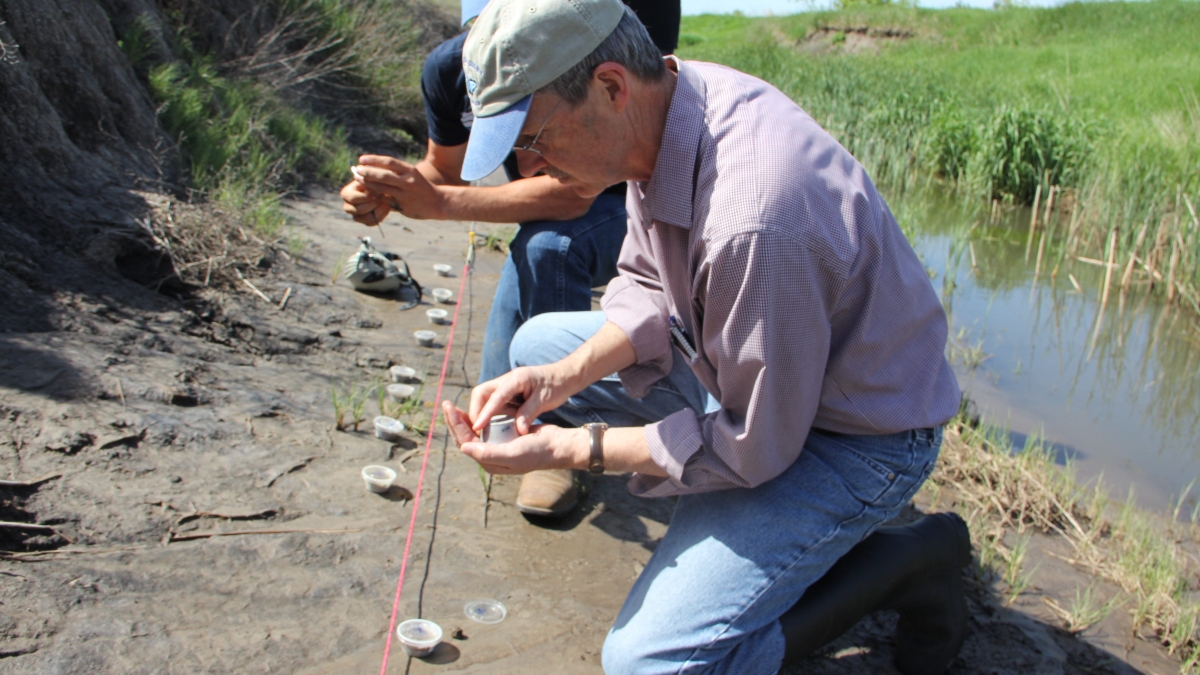
May 23, 2016
Lincoln, Neb. — Lancaster County is home to one of the rarest insects in North America. State and federally listed as endangered, there are less than 200 Salt Creek tiger beetles left in the wild. The Department of Entomology at the University of Nebraska–Lincoln has partnered with the Nebraska Game and Parks Commission, the U.S. Fish and Wildlife Service, the Lincoln Children’s Zoo and the Henry Doorly Zoo to save the beetle.
The small green and brown beetle requires wet, salty soil to survive. Habitat of this nature is fading so the Salt Creek tiger beetle is restricted to remnant saline marshes in Lancaster County. Members of the Department of Entomology gathered with their partners recently to release Salt Creek tiger beetle larvae into the Little Salt Creek north of Lincoln, a procedure they perform twice per year in an effort to recover the once large population.
“I don’t know if there’s anything we can do to get the salt creek tiger beetle off of the endangered list when the habitat is so restricted, but we now have the capacity to reestablish the population, which we didn’t have a few years ago,” said Gary Brewer, professor and head of the Department of Entomology.
Federally listed as endangered in 2005, populations of the the Salt Creek tiger beetle would need to be stabilized over a course of 10 consecutive years in at least three locations to be considered for delisting.
Using procedures pioneered at Omaha’s Henry Doorly Zoo, the Department of Entomology and other partners can grow beetles in the lab in half the time that typically takes them to grow in wild habitat. The beetle’s life cycle in the lab is compressed because they have access to a consistent and quality food supply. In addition, their survival rate is higher because they are not subjected to predators and parasites. The current lab colony is roughly four to five times the estimated size of the field population and is distributed among three locations as an additional safety measure.
The Salt Creek tiger beetle’s endangered status reflects more than a dwindling of one species. It also reflects the continuing changing conditions of eastern Nebraska’s salt marsh habitats. Urbanization, pesticide runoff, fresh water contamination, light pollution and flooding are all contributing factors to the decline of these unique areas and species such as the Salt Creek tiger beetle.
“It’s not just the Salt Creek tiger beetle that’s being threatened, the habitat itself is endangered,” said Research Technologist Steve Spomer, who has been surveying Salt Creek tiger beetle populations for over 20 years.
The Department of Entomology, along with their partners, is encouraging appreciation and action to preserve this rare insect, and the eastern Nebraska’s unique salt marsh habitats.
Gary Brewer
Department of Entomology
402-472-8040
gbrewer2@unl.edu